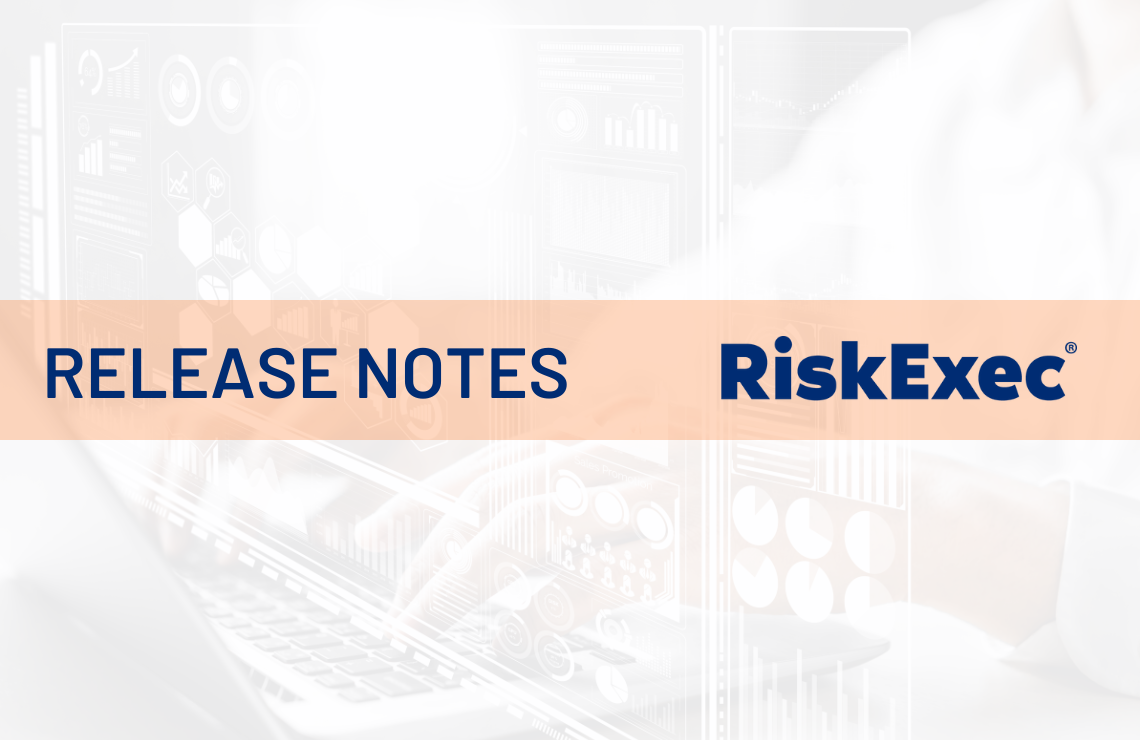Explore RiskExec's Fair Lending module and assess your institution's risk for disparate treatment, disparate impact, steering, and/or redlining.



RiskExec has been updated to include the following enhancements:
On March 31, 2025, the CFPB released the Preliminary 2024 HMDA Peer Modified LAR. The RiskExec team has downloaded, converted, and checked the data. It was loaded into RiskExec on April 1, 2025 for immediate use.
RiskExec takes great pride in being the first in the industry to make this vital dataset available to clients within 24 hours of the CFPB release. This year’s data has over 12.1 million records from 4,898 Respondents, compared to 11.5 million records from 5,000 Respondents for 2023. In 2024, there were approximately 6.15 million Originations, compared to 5.7 million in the 2023 HMDA Peer. For more information about this dataset, see this article.
In accordance with RiskExec's 7-year data retention policy, we will soon begin purging 2018 data from the RiskExec platform. This data purge is scheduled to take place on April 9, 2025.
If you wish to retain any of your institution's data from 2018, please ensure that you download it within the next 6 days. Otherwise, no action from you is needed, and the purge will proceed as scheduled.
Should this timeline present any challenges, kindly let our support team know by emailing support@riskexec.com as soon as possible so that we can assist you accordingly.
A new report has been added for Geographical Deposits Peer Sets called Peer Branches By Census Tract.
This report is populated by the FDIC Statement of Deposits data and therefore only contains Bank Branches. This report does not include Credit Union Branches.
Columns explained:
Users now have the option to zip centroid to state for any records that cannot be geocoded by RiskExec. Zip centroid to state will fill the state code based upon the state that the zip code’s center point is located in. The county and tract codes will be set to NA.
Note: For those records that are not automatically geocoded by RiskExec, our Geocoding Best Practices Guide strongly recommends that users attempt to locate addresses using other methods before using zip centroid.
Previously, any changes saved to the Translation Table would affect all data fields that share the same code type. As an example, we will look at the Type of Guarantee 1 and Type of Guarantee 2 fields in 1071 SBL.
Previously, if a user clicked on the Transform button for Type of Guarantee 1:
And then set 999 as the value if the data was blank:
Blank values would then be set to 999 for all of the Type of Guaranty fields the user had mapped.
Users now have the ability to save translations for a specific data field, and no other, by unchecking a new option labeled Share translations with other data fields with same code type.
By default, the checkbox will be checked, and all translations will be saved for all fields with the same code type, as they have been in the past. Unchecking the box and saving changes to the Translations table will now save the changes specifically for that data field, and no other.
In the above example, this is an important enhancement because, for Type of Guaranty 1, if the incoming data value is blank, the value should be reported as 999 for No Guarantee. However, for Type of Guaranty 2, if the incoming data value is blank, the value should be reported as blank.
These fields are available as filter options, as well as fields in the File Crosstab report where applicable, in their respective modules. See below for the modules in which each of these fields are available.
Filtering by any of these fields will give the user the options for Prior Year and all twelve months.
Please Note: If the values for any of these fields are NA or blank, those records will NOT be captured by these filter fields.
For example, the Application Year-Month filter has been selected.
Selecting Prior Year will filter for all records in the file that have an Application Date in the year prior to the File year of the data being filtered. Selecting any of the month options will filter for records with an Application Date in that month or months.
This field is available as a filter in all modules and also as a field option in all File Crosstab reports, where applicable. Additionally, it is available as a variable in the Fair Lending module for all model types and all Fair Lending Types.
Previously, the only way to use borrower income or tract income in the Fair Lending module was to use separate categories for Low Income and Moderate Income. Now, users can choose the new variable for combined LMI called LMI Census Tract.
Explore RiskExec's Fair Lending module and assess your institution's risk for disparate treatment, disparate impact, steering, and/or redlining.
Learn more about RiskExec's Fair Servicing module by downloading this short 2-pager.
Learn more about how this integration can help you save time and become more efficient.